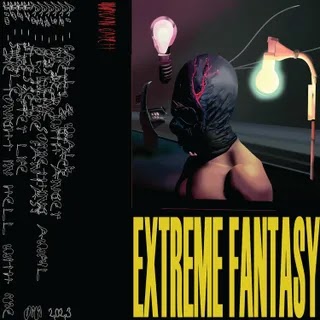Faithfull pairs her forever-soothing voice with the words of the Romantic poets who inspired her, over tasteful accompaniments from Bad Seeds sonic architect Warren Ellis.
John Keats was at the tail end of a very short life when he coined the term “Negative Capability.” The best artists, wrote the 22-year-old Romantic poet, don’t concern themselves with logical arguments or scientific proof. They pursue something far more uncertain: beauty. The originality of Keats’ 1817 idea feels dulled in the 21st century, considering it influenced the next 200 years of literature, and provided a precedent for such shameless pleasure-seekers and starry-eyed psychedelics as the Rolling Stones and the Beatles—as probably too many scholarly articles have pointed out. Yet of all the ’60s musical icons, perhaps none is more inclined toward the Romantic poets than Marianne Faithfull. Her lyrics are chockablock with literary references that feel comfortable, lived-in: She even titled her 2018 album, which concluded the most prolific and artistically consistent period of her career, Negative Capability.
Her latest, She Walks in Beauty, is a passion project of the highest order. Faithfull reads 11 Romantic poems over settings constructed by Warren Ellis, the longtime sonic architect of the Bad Seeds. If She Walks in Beauty feels underwhelming, it’s because the album doesn’t do a whole lot to transcend this concept. Faithfull could read a legal brief and make it sound beautiful, and part of the record’s appeal stems from hearing her posh British elocution wrap itself around outdated words like “contumely” and “thatch-eves.” Yet at its best, She Walks at least gestures toward something greater, an unusual merging of lieder and ambient music, like a pastoral Robert Ashley.
Ellis’ settings demonstrate the same gentle, stately sensibility he brought to Nick Cave’s Ghosteen, reproduced with acousmatic methods. You can pick out birdsong in the beginning, and there’s a lot of piano—some of it courtesy of Cave himself—but largely Ellis snips found sounds from their real-world referents, pasting them back together into an abstract collage. Faithfull manages to cull the emotion from Lord Byron and Thomas Hood without hamming it up, and she never lapses into contemporary speech patterns, recognizing that the old-fashioned colloquialisms of Wordsworth must be nailed with our best approximation of a person from his time. Listening to her say “yon azure sky” pries open a past as mutable and imagined as the source material. We might be sitting in our English gardens waiting for the sun, or fleeing the soot-covered streets of early industrial London: She brings her knowledge of the 19th century to these poems, while leaving space for their time-bending splendor.
The ceaseless lull of her voice accounts for the record’s ambient feel, but it also makes She Walks in Beauty seem like an actual poetry reading that drags on for a quarter hour too long. This sense might not be quite so strong if the record didn’t conclude with a 12-minute rendition of Tennyson’s “The Lady of Shallott,” which seems especially interminable because it follows a suite of much shorter readings, and also because it shows Ellis at his most reserved. He often approaches the poems cautiously, though the record works best when his arrangements intrude. His mournful violin coda to Wordsworth’s “Prelude: Book One Introduction” gives the album some much-needed space, while the vocal filter he lays on Shelley’s “To the Moon” offers us a modern reminder that this is music, not just a literary recitation.
She Walks in Beauty never quite determines its place on the long continuum between the two, and in an era when so many musicians are incorporating spoken word in exciting ways, this lack of consideration is puzzling. Yet Faithfull and Ellis encourage us to bend our imaginations toward the 19th century in ways that feel powerfully ambiguous. Of course we can draw many literal parallels: Our opioid epidemic echoes their opium eaters, our digital fatigue reflects their newspaper-obsessed cities, our coronavirus mirrors the tuberculosis that killed a quarter of the adult population in Europe, including the 25-year-old Keats. But we don’t need a history lesson, and we don’t need to know that Faithfull almost died of COVID-19 last year, to feel how She Walks in Beauty is pulled by the polarities that life shares with Romantic poetry: death and wonder. If you were once lucky enough to be protected from the former, the past year has been a stark reminder that death is never far away. But wonder is also there, in the same azure sky that impressed the writers of yore, in their poetry and our music.












%20Music%20Album%20Reviews.webp)



0 comments:
Post a Comment